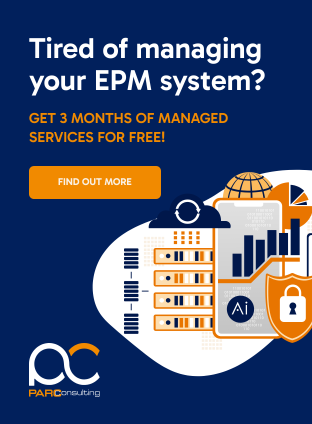Oracle Cloud EPM (Enterprise Performance Management) offers a robust and streamlined approach to planning and analysis, and a key component of this process is the design of forms. Forms in Oracle Cloud EPM are not just spreadsheet-like interfaces; they are dynamic tools directly connected to your data, minimizing manual processes and enhancing efficiency. Here’s a guide to designing effective forms in Oracle Cloud EPM.
Streamlining Planning with Global Assumptions
The planning methodology in Oracle Cloud EPM allows setting global assumptions, which streamlines the planning process. This approach enables planning by exception, reducing the need for extensive user inputs and simplifying the overall process. Users can still update assumptions individually, ensuring flexibility and control.
Comparing Data and Highlighting Variances
During the planning process, it’s common to compare actual data with current or forecast data. Forms can highlight areas with significant variances through data validation, making it easier to identify and address discrepancies.
Leveraging Smart Forms
Smart forms are planning forms created in SmartView, based on ad hoc analysis grids in Excel. They leverage Excel’s functionality, such as formulas and functions, for business calculations. For instance, formulas in a grid can be set to update immediately when data is entered, providing real-time insights.
Design Best Practices
For guidelines on designing forms, Oracle Academy’s Design Best Practices offer a wealth of information. Key tips include:
- Separate Input and Reporting Forms: Design forms with the end-users in mind, differentiating between data entry and reporting.
- Manageable Data Entry Forms: Ensure forms contain a consumable amount of information for users.
- Navigation Flows: Set up flows to help users navigate their planning process efficiently.
- Use of Dashboards: Combine data entry and reporting forms in dashboards to enhance user experience and facilitate analysis.
Balancing Information and Performance
When designing forms, balance the amount of information in a single form with the number of forms available to end-users. Form performance depends on several factors, including network conditions, environmental factors, and the design of the form itself.
Best Practices for Form Design
- Dimension Placement: Typically, accounts or periods are placed on the row or column, with other dimensions in the form sections (page, POV, column, or row).
- Member Rows and Dimensions: Consider the total number of member rows displayed and the number of dimensions on a row.
- Reducing Maintenance: Use functional relationships, substitution variables, and user variables for dimension selection.
- Form Properties and Settings: Utilize settings like suppressing missing blocks and invalid scenario time periods to improve performance.
Business Rules and Performance
For business rules that take longer to run, associate them with a form but do not select ‘run after save’. Use runtime prompts and member selections to limit the scope of the rule and enhance performance.
Monitoring and Analyzing Form Design
Oracle provides general guidelines for designing applications and artifacts for reasonable performance. The application monitor can identify and resolve design flaws, and form design is analyzed at three levels: good, fair, and poor. This analysis helps in identifying and addressing any issues.
Conclusion
Designing forms in Oracle Cloud EPM is a critical task that requires a balance between user-friendliness and performance optimization. By following these best practices, you can create forms that not only meet your business needs but also provide a seamless and efficient experience for your users. Remember, continuous monitoring and adaptation are key to maintaining optimal performance and utility of your EPM forms.


